At the end of the day? It all doesn’t matter. The Book of Mormon Witnesses and their testimonies of the gold plates are irrelevant. It does not matter whether eleven 19th century treasure diggers with magical worldviews saw some gold plates or not. It doesn’t matter because of this one simple fact:
JOSEPH DID NOT USE THE GOLD PLATES FOR TRANSLATING THE BOOK OF MORMON
The testimony of the Three and Eight Witnesses to the Book of Mormon is a key part to the testimonies of many members of the Church. Some even base their testimony of the truthfulness of the Book of Mormon on these 11 witnesses and their claims. As a missionary, I was instructed to teach investigators about the testimonies of the witnesses to the Book of Mormon as part of boosting the book’s credibility.
There are several critical problems for relying and betting on these 19th century men as credible witnesses.
Magical Worldview
In order to truly understand the Book of Mormon witnesses and the issues with their claims, one must understand the magical worldview of many people in early 19th century New England. These are people who believed in folk magic, divining rods, visions, second sight, peep stones in hats, treasure hunting (money digging or glass looking), and so on.
Many people believed in buried treasure, the ability to see spirits and their dwelling places within the local hills and elsewhere. This is one reason why treasure digging as a paid service was practiced. Joseph Smith, his father, and his brother Hyrum had engaged in treasure hunting from 1820–1827. Joseph was hired by folks like Josiah Stowell, who Joseph mentions in his history. In 1826, Joseph was arrested and brought to court in Bainbridge, New York on the complaint of Stowell’s nephew who accused Joseph of being a “disorderly person and an imposter.”
It would not have been unusual during this time for a neighbor, friend, or even a stranger to come up to you and say, “I received a vision of the Lord!” and for you to respond, in all seriousness, “Well, what did the Lord say?”
This is one of the reasons why 21st century Mormons, once including myself, are so confused and bewildered when hearing stuff like Joseph Smith using a peep stone in a hat or Oliver Cowdery using a divining rod or dowsing rod such as illustrated below:
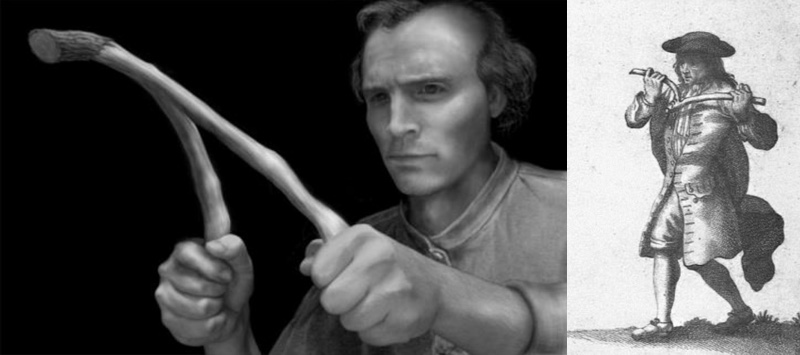
The use of divining rods (such as the one above) is actually mentioned in the scriptures. In Doctrine & Covenants 8, the following heading provides context for the discussion:
Revelation given through Joseph Smith the Prophet to Oliver Cowdery, at Harmony, Pennsylvania, April 1829. In the course of the translation of the Book of Mormon, Oliver, who continued to serve as scribe, writing at the Prophet’s dictation, desired to be endowed with the gift of translation. The Lord responded to his supplication by granting this revelation.
The revelation states, in relevant part:
From the D&C 8 account, we don’t really know much about what exactly the “gift of Aaron” is that Oliver Cowdery received. What is “the gift of Aaron”? The text provides several clues:
- Oliver has a history of using it, since “it has told [him] many things.”
- It is “the gift of God.”
- It is to be held in Oliver’s hands (and kept there, impervious to any power).
- It allows Oliver to “do marvelous works.”
- It is “the work of God.”
- The Lord will speak through it to Oliver and tell him anything he asks while using it.
- It works through faith.
- It enables Oliver to translate ancient sacred documents.
With only these clues, the “gift of Aaron” is difficult to identify. The task becomes much easier, however, when we look at the original revelation contained in the Book of Commandments, a predecessor volume to the Doctrine & Covenants, used by the LDS Church before 1835. Specifically, Section 7 of the Book of Commandments contains wording that was changed in the Doctrine & Covenants 8. The term “gift of Aaron” was originally “rod” and “rod of nature” in the Book of Commandments:
Now this is not all, for you have another gift, which is the gift of working with the rod: behold it has told you things: behold there is no other power save God, that can cause this rod of nature, to work in your hands.
So, what is the “gift of Aaron” mentioned in D&C 8? It is a “rod of nature.”
What is a “rod of nature”? It is a divining rod or dowsing rod as illustrated in the above images, which Oliver Cowdery used to hunt for buried treasure.
Cowdery’s use of a divining rod to search for buried treasure evokes similar images of Joseph Smith hunting for treasure with a peep stone in a hat. Oliver also wished to use his divining rod, in the same way Joseph Smith used his stone and hat, to translate ancient documents. Doctrine & Covenants Section 8 indicates that the Lord, through Joseph Smith, granted Oliver’s request to translate using a...rod.
If Oliver Cowdery’s gift was really the use of a divining rod – and it was – then this tells us that the origins of the Church are much more rooted in folk magic and superstition than we’ve been led to believe by the LDS Church’s whitewashing of its origins and history.
Witnesses
We are told that the witnesses never disavowed their testimonies, but we have not come to know these men or investigated what else they said about their experiences.
They are 11 witnesses to the Book of Mormon: Martin Harris, Oliver Cowdery, Hiram Page, David Whitmer, John Whitmer, Christian Whitmer, Jacob Whitmer, Peter Whitmer Jr., Hyrum Smith, Samuel Smith, and Joseph Smith Sr. – who all shared a common worldview of second sight, magic, and treasure digging – which is what drew them together in 1829.
The following are several facts and observations on three of the Book of Mormon Witnesses:
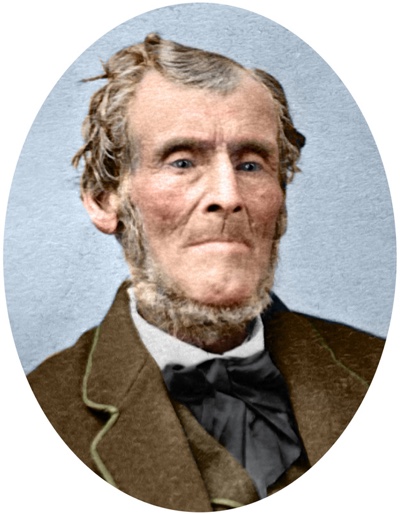
Martin Harris was anything but a skeptical witness. He was known by many of his peers as an unstable, gullible, and superstitious man. Brigham Young once said of Martin:
As for Martin Harris, he had not much to apostatize from; he possessed a wild, speculative brain. I have heard Joseph correct him and exhort him to repentance for teaching false doctrines.
Reports assert that he and the other witnesses never literally saw the gold plates, but only an object said to be the plates, covered with a cloth.
Additionally, Martin Harris had a direct conflict of interest in being a witness. He was deeply financially invested in the Book of Mormon as he mortgaged his farm to finance the book.
The following are some accounts of the superstitious side of Martin Harris:
Once while reading scripture, he reportedly mistook a candle’s sputtering as a sign that the devil desired him to stop. Another time he excitedly awoke from his sleep believing that a creature as large as a dog had been upon his chest, though a nearby associate could find nothing to confirm his fears. Several hostile and perhaps unreliable accounts told of visionary experiences with Satan and Christ, Harris once reporting that Christ had been poised on a roof beam.
No matter where he went, he saw visions and supernatural appearances all around him. He told a gentleman in Palmyra, after one of his excursions to Pennsylvania, while the translation of the Book of Mormon was going on, that on the way he met the Lord Jesus Christ, who walked along by the side of him in the shape of a deer for two or three miles, talking with him as familiarly as one man talks with another.
According to two Ohio newspapers, shortly after Harris arrived in Kirtland he began claiming to have ‘seen Jesus Christ and that he is the handsomest man he ever did see. He has also seen the Devil, whom he described as a very sleek haired fellow with four feet, and a head like that of a Jack-ass.’
Before Harris became a Mormon, he had already changed his religion at least five times. After Joseph’s death, Harris continued this earlier pattern by joining and leaving 5 more different sects, including that of James Strang (whom Harris went on a mission to England for), other Mormon offshoots, and the Shakers. Not only did Harris join other religions, he testified and witnessed for them. It has been reported that Martin Harris “declared repeatedly that he had as much evidence for a Shaker book he had as for the Book of Mormon” (The Braden and Kelly Debate, p.173).
In addition to his devotion to self-proclaimed prophet James Strang, Martin Harris was a follower to another self-proclaimed Mormon prophet by the name of Gladden Bishop. Like Strang, Bishop claimed to have plates, a Urim and Thummim, and that he was receiving revelation from the Lord. Martin was one of Gladden Bishop’s witnesses to his claims.
If someone testified to you of an unusual spiritual encounter he had, but he also told you that he...
- Conversed with Jesus who took the form of a deer
- Saw the devil with his four feet and donkey head
- Chipped off a chunk of a stone box that would mysteriously move beneath the ground to avoid capture
- Interpreted simple things like a flickering of a candle as a sign of the devil
- Had a creature appearing on his chest that no one else could see
...would you believe his claims? Or would you call the nearest mental hospital?
With inconsistencies, a conflict of interest, magical thinking, and superstition like this, exactly what credibility does Martin Harris have and why should I believe him?
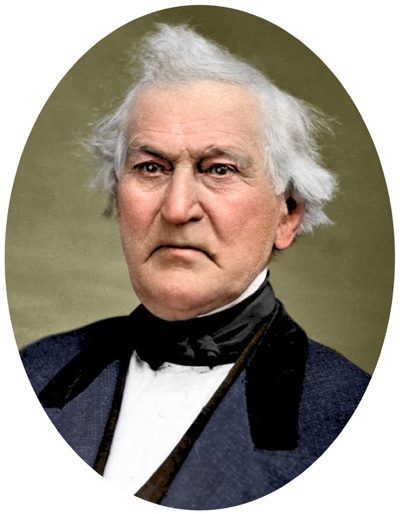
David claimed in early June 1829 before their group declaration that he, Cowdery, and Joseph Smith observed ‘one of the Nephites’ carrying the records in a knapsack on his way to Cumorah. Several days later this trio perceived ‘that the Same Person was under the shed’ at the Whitmer farm.
In 1880, David Whitmer was asked for a description of the angel who showed him the plates. Whitmer responded that the angel ‘had no appearance or shape.’ When asked by the interviewer how he then could bear testimony that he had seen and heard an angel, Whitmer replied, ‘Have you never had impressions?’ To which the interviewer responded, ‘Then you had impressions as the Quaker when the spirit moves, or as a good Methodist in giving a happy experience, a feeling?’ ‘Just so,’ replied Whitmer.
A young Mormon lawyer, James Henry Moyle, who interviewed Whitmer in 1885, asked if there was any possibility that Whitmer had been deceived. “His answer was unequivocal... that he saw the plates and heard the angel with unmistakable clearness.” But Moyle went away “not fully satisfied...It was more spiritual than I anticipated.” – Moyle diary, June 28, 1885, Early Mormon Documents 5:141
Whitmer’s testimony also included the following:
If you believe my testimony to the Book of Mormon; if you believe that God spake to us three witnesses by his own voice, then I tell you that in June, 1838, God spake to me again by his own voice from the heavens and told me to ‘separate myself from among the Latter Day Saints, for as they sought to do unto me, so it should be done unto them.’
If David Whitmer is a credible witness, why are we only using his testimony of the Book of Mormon while ignoring his other testimony claiming that God Himself spoke to Whitmer “by his own voice from the heavens” in June 1838, commanding Whitmer to apostatize from the Lord’s one and only true Church?

Like Joseph and most of the Book of Mormon witnesses, Oliver Cowdery and his family were treasure hunters. Oliver’s preferred tool of trade, as mentioned above, was the divining rod. He was known as a “rodsman.” Along with the witnesses, Oliver held a magical worldview.
Also, Oliver Cowdery was not an objective and independent witness. As scribe for the Book of Mormon, co-founder of the Church, and cousin to Joseph Smith, a conflict of interest existed in Oliver being a witness.
Second Sight
People believed they could see things as a vision in their mind. They called it “second sight.” We call it “imagination.” It made no difference to these people if they saw with their natural eyes or their spiritual eyes as both were one and the same.
As mentioned previously, people believed they could see spirits and their dwelling places in the local hills along with seeing buried treasure deep in the ground. This supernatural way of seeing the world is also referred in Doctrine & Covenants as “the eyes of our understanding.”
If the plates and the experiences were real and tangible as 21st century Mormons are led to believe, why would the witnesses make the following kind of statements when describing the plates and the experience?
I never saw the golden plates, only in a visionary or entranced state.
While praying I passed into a state of entrancement, and in that state I saw the angel and the plates.
He only saw the plates with a spiritual eye
I saw them with the eye of faith.
As shown in the vision
...when I came to hear Martin Harris state in public that he never saw the plates with his natural eyes only in vision or imagination, neither Oliver nor David & also that the eight witnesses never saw them & hesitated to sign that instrument for that reason, but were persuaded to do it, the last pedestal gave way, in my view our foundation was sapped & the entire superstructure fell in heap of ruins, I therefore three week since in the Stone Chapel...renounced the Book of Mormon...after we were done speaking M Harris arose & said he was sorry for any man who rejected the Book of Mormon for he knew it was true, he said he had hefted the plates repeatedly in a box with only a tablecloth or a handkerchief over them, but he never saw them only as he saw a city throught [sic] a mountain. And said that he never should have told that the testimony of the eight was false, if it had not been picked out of—–— [him/me?] but should have let it passed as it was...
...when I came to hear Martin Harris state in public that he never saw the plates with his natural eyes only in vision or imagination, neither Oliver nor David & also that the eight witnesses never saw them & hesitated to sign that instrument for that reason, but were persuaded to do it, the last pedestal gave way, in my view our foundation was sapped & the entire superstructure fell in heap of ruins, I therefore three week since in the Stone Chapel...renounced the Book of Mormon...after we were done speaking M Harris arose & said he was sorry for any man who rejected the Book of Mormon for he knew it was true, he said he had hefted the plates repeatedly in a box with only a tablecloth or a handkerchief over them, but he never saw them only as he saw a city throught [sic] a mountain. And said that he never should have told that the testimony of the eight was false, if it had not been picked out of—–— [him/me?] but should have let it passed as it was...
Two other Palmyra residents said that Harris told them that he had seen the plates with “the eye of faith” or “spiritual eyes”
John H. Gilbert, the typesetter for most of the Book of Mormon, said that he had asked Harris, “Martin, did you see those plates with your naked eyes?” According to Gilbert, Harris “looked down for an instant, raised his eyes up, and said, ‘No, I saw them with a spiritual eye.”
If these witnesses literally really saw the plates like everyone else on the planet sees tangible objects...why strange statements like, “I never saw them only as I see a city through a mountain”? What does that even mean? I have never seen a city through a mountain. Have you?
Why all these bizarre statements from the witnesses if the plates were real and the event literal?
Why would you need a vision or supernatural power to see real physical plates that Joseph said were in a box that he carried around? When Martin Harris was asked, “But did you see them [plates] with your natural, your bodily eyes, just as you see this pencil-case in my hand? Now say no or yes to this.” Martin answered, “I did not see them as I do that pencil-case, yet I saw them with the eye of faith; I saw them just as distinctly as I see anything around me, though at the time they were covered over with a cloth.” – Origin and History of the Mormonites, p.406
Why couldn’t Martin just simply answer “yes”?
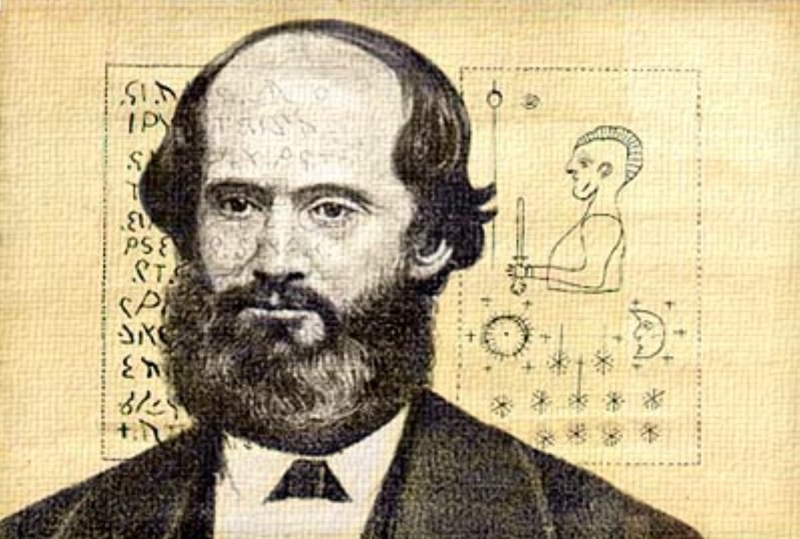
James Strang and his claims are fascinating. He was basically Joseph Smith 2.0 – but with a twist. Like Joseph, Strang did the following:
- Claimed that he was visited by an angel who reserved plates for him to translate into the word of God. “The record which was sealed from my servant Joseph. Unto thee it is reserved.”
- Received the “Urim and Thummim”.
- Produced 11 witnesses who testified that they too had seen and inspected ancient metal plates.
- Introduced new scripture. After unearthing the plates (the same plates as Laban from whom Nephi took the brass plates in Jerusalem), Strang translated it into scripture called the “Book of the Law of the Lord.”
- Established a new Church: The Church of Jesus Christ of Latter Day Saints (Strangite). Its headquarters is still today in Voree, Wisconsin.
Like the Book of Mormon, the Book of the Law of the Lord has the testimony of its Witnesses in its preface:
Be it known unto all nations, kindreds, tongues and people, to whom this Book of the Law of the Lord shall come, that James J. Strang has the plates of the ancient Book of the Law of the Lord given to Moses, from which he translated this law, and has shown them to us. We examined them with our eyes, and handled them with our hands. The engravings are beautiful antique workmanship, bearing a striking resemblance to the ancient oriental languages; and those from which the laws in this book were translated are eighteen in number, about seven inches and three-eights wide, by nine inches long, occasionally embellished with beautiful pictures. And we testify unto you all that the everlasting kingdom of God is established, in which this law shall be kept, till it brings in rest and everlasting righteousness to all the faithful.
SAMUEL P. BACON,
WARREN POST,
PHINEAS WRIGHT,
ALBERT N. HOSMER,
EBENEZER PAGE,
JEHIEL SAVAGE.
In addition to the above 7 witnesses, there were 4 witnesses who went with Strang as they unearthed the Voree Plates:
On the thirteenth day of September, 1845, we, Aaron Smith, Jirah B. Wheelan, James M. Van Nostrand, and Edward Whitcomb, assembled at the call of James J. Strang, who is by us and many others approved as a Prophet and Seer of God. He proceeded to inform us that it had been revealed to him in a vision that an account of an ancient people was buried in a hill south of White River bridge, near the east line of Walworth County; and leading us to an oak tree about one foot in diameter, told us that we would find it enclosed in a case of rude earthen ware under that tree at the depth of about three feet; requested us to dig it up, and charged us to so examine the ground that we should know we were not imposed upon, and that it had not been buried there since the tree grew. The tree was surrounded by a sward of deeply rooted grass, such as is usually found in the openings, and upon the most critical examination we could not discover any indication that it had ever been cut through or disturbed. We then dug up the tree, and continued to dig to the depth of about three feet, where we found a case of slightly baked clay containing three plates of brass. On one side of one is a landscape view of the south end of Gardner’s prairie and the range of hills where they were dug. On another is a man with a crown on his head and a scepter in his hand, above is an eye before an upright line, below the sun and moon surrounded with twelve stars, at the bottom are twelve large stars from three of which pillars arise, and closely interspersed with them are seventy very small stars. The other four sides are very closely covered with what appear to be alphabetic characters, but in a language of which we have no knowledge. The case was found imbedded in indurated clay so closely fitting it that it broke in taking out, and the earth below the soil was so hard as to be dug with difficulty even with a pickax. Over the case was found a flat stone about one foot wide each way and three inches thick, which appeared to have undergone the action of fire, and fell in pieces after a few minutes exposure to the air. The digging extended in the clay about eighteen inches, there being two kinds of earth of different color and appearance above it. We examined as we dug all the way with the utmost care, and we say, with utmost confidence, that no part of the earth through which we dug exhibited any sign or indication that it had been moved or disturbed at any time previous. The roots of the tree stuck down on every side very closely, extending below the case, and closely interwoven with roots from other trees. None of them had been broken or cut away. No clay is found in the country like that of which the case is made. In fine, we found an alphabetic and pictorial record, carefully cased up, buried deep in the earth, covered with a flat stone, with an oak tree one foot in diameter growing over it, with every evidence that the sense can give that it has lain there as long as that tree has been growing. Strang took no part in the digging, but kept entirely away from before the first blow was struck till after the plates were taken out of the case; and the sole inducement to our digging was our faith in his statement as a Prophet of the Lord that a record would thus and there be found.
JIRAH B. WHEELAN,
J. M. VAN NOSTRAND,
EDWARD WHITCOMB
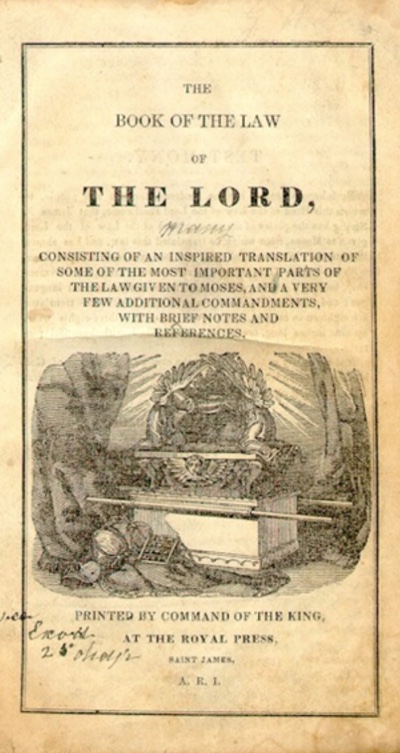

Like Joseph, Strang had a scribe (Samuel Graham) who wrote as Strang translated. Along with several of the witnesses, Graham was later excommunicated from Strang’s Church.
There is no direct evidence that any of the above 11 Strang witnesses ever denied their testimony of James Strang, the Voree Plates, Strang’s church, or Strang’s divine calling. Every single living Book of Mormon witness besides Oliver Cowdery accepted Strang’s prophetic claim of being Joseph’s true successor and joined him and his church. Additionally, every single member of Joseph Smith’s family except for Hyrum’s widow also endorsed, joined, and sustained James Strang as “Prophet, Seer, and Revelator.”
What does this say about the credibility of the Book of Mormon witnesses if they were so easily duped by James Strang and his claims of being a prophet called of God to bring forth new scripture from ancient plates only to later turn out to be a fraud?
No Document of Actual Signatures
The closest thing we have in existence to an original document of the testimonies of the witnesses is a printer’s manuscript written by Oliver Cowdery (you can see black/white photo on Joseph Smith Papers here). Every witness name except Oliver Cowdery on that document is not signed; they are written in Oliver’s own handwriting. Further, there is no testimony from any of the witnesses, with the exception of David Whitmer, directly attesting to the direct wording and claims of the manuscript or statements in the Book of Mormon.
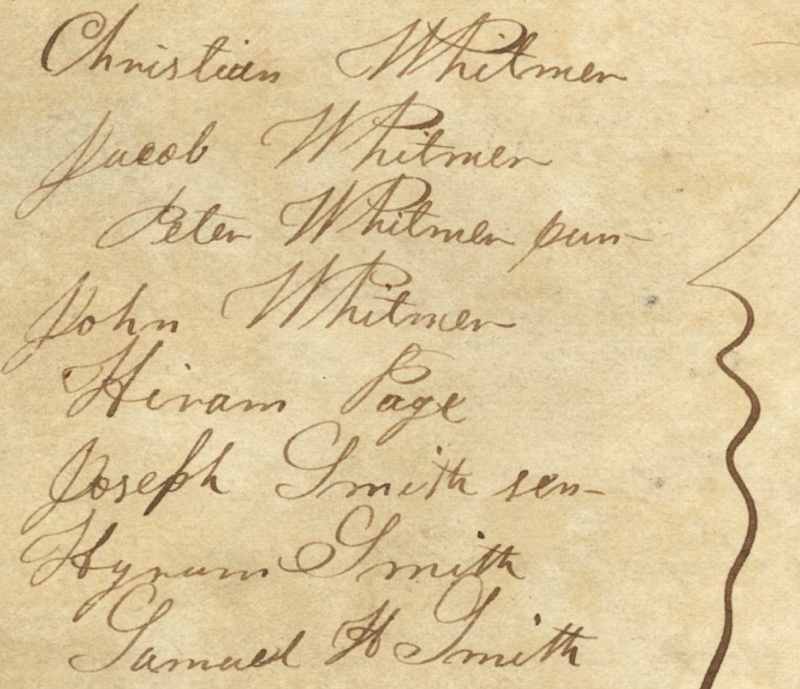
While we have “testimonies” from the witnesses recorded in later years through interviews and second eyewitness accounts and affidavits, many of the “testimonies” given by some of the witnesses do not match the claims and wording of the preface statements in the Book of Mormon.
For example, the Testimony of Three Witnesses (which includes Martin Harris) states:
...that we beheld and saw the plates, and the engravings thereon;
Martin Harris:
...he said he had hefted the plates repeatedly in a box with only a tablecloth or a handkerchief over them, but he never saw them...
I did not see them as I do that pencil-case, yet I saw them with the eye of faith; I saw them just as distinctly as I see anything around me, though at the time they were covered over with a cloth.
There is a difference between saying you “beheld and saw the plates and the engravings thereon” and saying you “hefted the plates repeatedly in a box with only a tablecloth or a handkerchief over them” or that the plates “were covered over with a cloth” and that you “did not see them as [you] do that pencil-case, yet [you] saw them with the eye of faith” or “with a spiritual eye.”
When I was a missionary, my understanding and impression from looking at the testimony of the Three and Eight Witnesses in the Book of Mormon was that the signatures and statements were legally binding documents in which the names represented signatures on the original document similar to those you would see on the original US Declaration of Independence. This is how I presented the testimonies to investigators. According to the above manuscript that Oliver took to the printer for the Book of Mormon, they were not signatures. Since there is no document or evidence of any document whatsoever with the actual signatures of all of the witnesses, the only real testimonies we have from the witnesses are later interviews given by them and eyewitness accounts/affidavits made by others, some of which are shown previously.
From a legal perspective, the statements of the testimonies of the Three and Eight witnesses hold no credibility or weight in a court of law as there are a) no signatures of any of the witnesses except Oliver, b) no specific dates, c) no specific locations, and d) some of the witnesses made statements after the fact that contradict and cast doubt on the specific claims made in the statements contained in the preface of the Book of Mormon.
Conclusion
“THE WITNESSES NEVER RECANTED OR DENIED THEIR TESTIMONIES”
Neither did James Strang’s witnesses; even after they were excommunicated from the church and estranged from Strang. Neither did dozens of Joseph Smith’s neighbors and peers who swore and signed affidavits on Joseph’s and his family’s characters. Neither did many of the Shaker witnesses who signed affidavits that they saw an angel on the roof top holding the Sacred Roll and Book written by founder Ann Lee. Same goes for the numerous people over the centuries who claimed their entire lives to have seen the Virgin Mary and pointing to their experience as evidence that Catholicism is true.
There are also numerous witnesses who have never recanted their sincere testimonies of seeing UFOs, Big Foot, the Loch Ness Monster, Abominable Snowman, Aliens, and so on.
It simply doesn’t mean anything. People believe in false things their entire lives and never recant. Just because they never denied or recanted their testimonies does not follow that their experience and claims are authentic or that reality matches to what their perceived experience was.
PROBLEMS
Signatures
In discussing the witnesses, we should not overlook the primary accounts of the events they testified to. The official statements published in the Book of Mormon are not dated, signed (we have no record with their signatures except for Oliver’s), nor is a specific location given for where the events occurred. These are not eleven legally sworn affidavits but rather simple statements pre-written by Joseph Smith with claims of having been signed by three men and another by eight.
Relatives
All of the Book of Mormon witnesses, except Martin Harris, were related by blood or marriage either to the Smiths or Whitmers. Oliver Cowdery (married to Elizabeth Ann Whitmer and cousin to Joseph Smith), Hiram Page (married to Catherine Whitmer), and the five Whitmers were all related by marriage. Of course, Hyrum Smith, Samuel Smith, and Joseph Smith Sr. were Joseph’s brothers and father.
Mark Twain made light of this obvious problem:
...I could not feel more satisfied and at rest if the entire Whitmer family had testified.
Unsavory Characters
Within eight years, all of the Three Witnesses were excommunicated from the Church. This is what Joseph Smith said about them in 1838:
Such characters as...John Whitmer, David Whitmer, Oliver Cowdery, and Martin Harris, are too mean to mention; and we had liked to have forgotten them.
This is what first counselor of the First Presidency and once close associate Sidney Rigdon had to say about Oliver Cowdery and David Whitmer:
Oliver Cowdery, David Whitmer...united with a gang of counterfeiters, thieves, liars, and blacklegs in the deepest dye, to deceive, cheat, and defraud the saints out of their property, by every art and stratagem which wickedness could invent...
What does it say about the Witnesses and their characters if even the Prophet and his counselor in the First Presidency thought they were questionable and unsavory?
Prophetic Influence
As mentioned in the above “Polygamy | Polyandry” section, Joseph was able to influence and convince many of the 31 witnesses to lie and perjure in a sworn affidavit that Joseph was not a polygamist. Is it outside the realm of possibility that Joseph was also able to influence or manipulate the experiences of his own magical thinking, treasure digging family and friends as witnesses? Biased Mormon men who already believed in second sight and who already believed that Joseph Smith was a true prophet of God?
Duped
If the Prophet Joseph Smith could get duped with the Kinderhook Plates, thinking that the 19th century fake plates were a legitimate record of a “descendent of Ham,” how is having gullible men like Martin Harris handling the covered plates going to prove anything?
Strang Witnesses
James Strang’s claims and Voree Plates Witnesses are distinctive and more impressive compared to the Book of Mormon Witnesses:
- All of Strang’s witnesses were not related to one another through blood or marriage like the Book of Mormon Witnesses were.
- Some of the witnesses were not members of Strang’s church.
- The Voree Plates were displayed in a museum for both members and non-members to view and examine.
- Strang provided 4 witnesses who testified that on his instructions, they actually dug the plates up for Strang while he waited for them to do so. They confirmed that the ground looked previously undisturbed.
Shakers
The Shakers and Ann Lee:
The Shakers felt that “Christ has made his second appearance on earth, in a chosen female known by the name of Ann Lee, and acknowledged by us as our Blessed Mother in the work of redemption” (Sacred Roll and Book, p.358). The Shakers had a sacred book entitled A Holy, Sacred and Divine Roll and Book; From the Lord God of Heaven, to the Inhabitants of Earth.
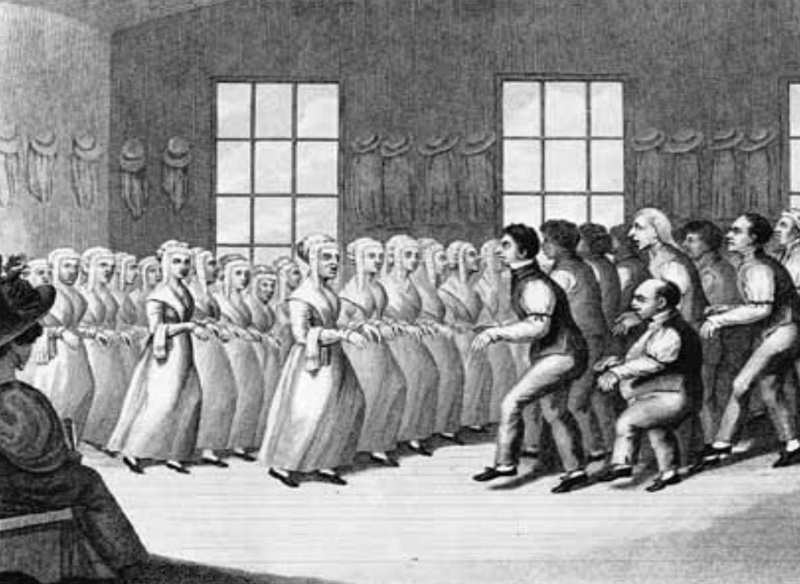
More than 60 individuals gave testimony to the Sacred Roll and Book, which was published in 1843. Although not all of them mention angels appearing, some of them tell of many angels visiting them. One woman told of eight different visions.
Here is the testimony statement (page 304 of Sacred Roll and Book):
We, the undersigned, hereby testify, that we saw the holy Angel standing upon the house-top, as mentioned in the foregoing declaration, holding the Roll and Book.
LOUISA CHAMBERLAIN.
CATY DE WITT.
LAURA ANN JACOBS.
SARAH MARIA LEWIS.
SARAH ANN SPENCER.
LUCINDA MCDONIELS.
MARIA HEDRICK.
Joseph Smith only had three witnesses who claimed to see an angel. The Shakers, however, had a large number of witnesses who claimed they saw angels and the Sacred Roll and Book. There are over a hundred pages of testimony from “Living Witnesses.” The evidence seems to show that Martin Harris accepted the Sacred Roll and Book as a divine revelation. Clark Braden stated: “Harris declared repeatedly that he had as much evidence for a Shaker book he had as for the Book of Mormon” (The Braden and Kelly Debate, p.173).
Why should we believe the Book of Mormon Witnesses but not the Shakers witnesses? What are we to make of the reported Martin Harris comment that he had as much evidence for the Shaker book he had as for the Book of Mormon?
In light of the James Strang/Voree Plates witnesses, the fact that all of the Book of Mormon Witnesses – except Martin Harris – were related to either Joseph Smith or David Whitmer, along with the fact that all of the witnesses were treasure hunters who believed in second sight, and in light of their superstitions and reputations...why would anyone gamble their lives by believing in a book based on anything these men said or claimed, or what’s written as the testimonies of the Witnesses in the preface of the Book of Mormon?
The mistake that is made by 21st century Mormons is that they’re seeing the Book of Mormon Witnesses as empirical, rational, nineteenth-century men instead of the nineteenth-century magical thinking, superstitious, inconsistent, and treasure digging men they were. They have ignored the peculiarities of their worldview, and by so doing, they misunderstand their experiences as witnesses.
At the end of the day? It all doesn’t matter. The Book of Mormon Witnesses and their testimonies of the gold plates are irrelevant. It does not matter whether eleven 19th century treasure diggers with magical worldviews saw some gold plates or not. It doesn’t matter because of this one simple fact:
JOSEPH DID NOT USE THE GOLD PLATES FOR TRANSLATING THE BOOK OF MORMON
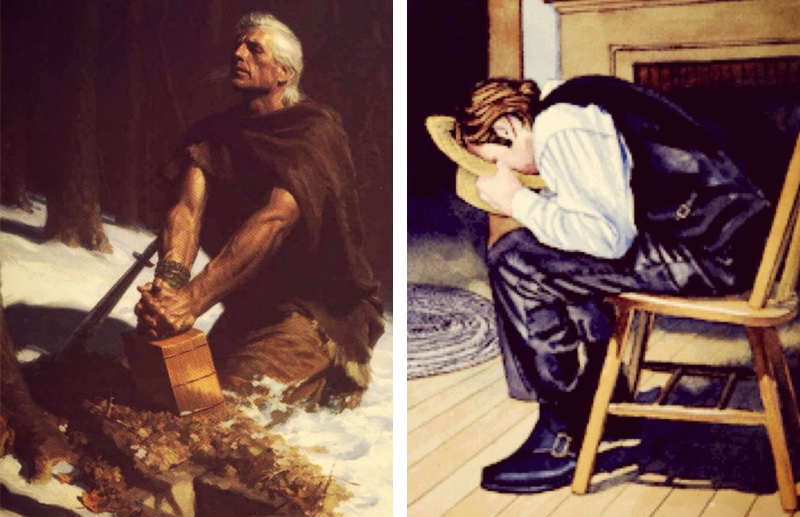
Ancient prophets go through all the time, trouble, and effort in making, engraving, compiling, abridging, preserving, transporting, hiding, and burying gold plates.
Moroni dies and comes back as a resurrected angel to deliver the gold plates to Joseph for translating the Book of Mormon.
Joseph uses his rock and hat instead for dictating the Book of Mormon we have today.